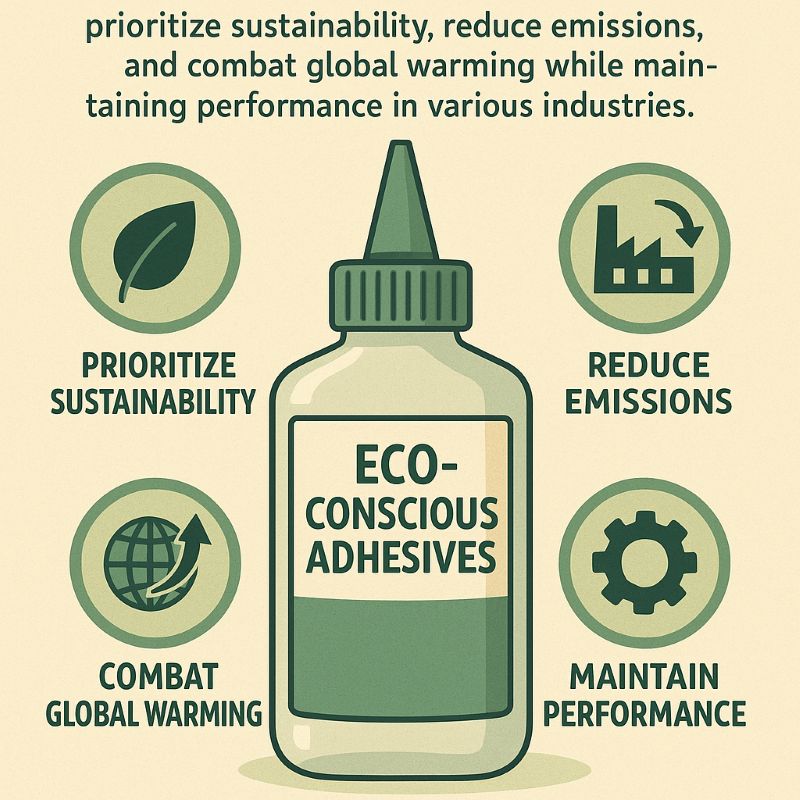
Eco-Conscious Adhesives Defined
Types of Eco-Friendly Adhesives
Role in Combating Global Warming
Methods of Production
Latest Trends in Adhesives
Sustainable Adhesive Strategies
Future of Eco-Conscious Adhesives
Frequently Asked Questions (FAQ)
Eco-conscious adhesives are transforming the way industries approach bonding by prioritizing environmental sustainability. These adhesives are formulated to reduce harmful emissions and often incorporate renewable materials, thereby lowering their overall carbon footprint. By adopting such environmentally conscious options, industries can significantly contribute to sustainability efforts while maintaining production efficiency and effectiveness.
Eco-friendly adhesives are developed from natural sources such as plant-based polymers or biodegradable resins, making them a more sustainable alternative to conventional adhesives. Some formulations focus on reducing volatile organic compounds (VOCs), while others emphasize water-based systems to limit chemical exposure. By using these innovative materials, manufacturers enhance their environmental profiles and reduce the long-term ecological impact of their products.
Eco-conscious adhesives play a meaningful role in reducing the environmental burden of manufacturing. By shifting toward sustainable bonding technologies, businesses can cut greenhouse gas emissions and minimize dependence on fossil-based raw materials. Whether through biodegradability, low-emission properties, or renewable inputs, these adhesives support efforts to curb global warming and align with global environmental standards.
The production of eco-conscious adhesives emphasizes sustainable sourcing and clean processing. Manufacturers often employ water-based or solvent-free systems and use bio-derived ingredients that minimize the carbon intensity of the production cycle. Modern production techniques are designed to ensure performance while meeting regulatory requirements for environmental health and safety, setting a benchmark for sustainable manufacturing practices.
The adhesives sector is seeing rapid growth in sustainable innovation. Key trends include:
Expansion of bio-based and biodegradable adhesive technologies
Reduction of VOC content in high-performance adhesives
Integration of recycling-compatible bonding systems
These developments not only serve environmental goals but also improve end-user safety and compliance with international sustainability regulations.
Implementing sustainable adhesive strategies involves selecting materials that support long-term ecological goals while maintaining functionality. Industries can reduce their environmental impact by adopting water-based systems, biodegradable formulations, and renewable-resource inputs. These strategies contribute to a cleaner supply chain, lower emissions, and better alignment with circular economy initiatives.
The future of adhesives is undeniably green. As industries face increasing pressure to decarbonize and improve product lifecycle sustainability, eco-conscious adhesive technologies are set to play a central role. Research continues to focus on improving performance, lifespan, and recyclability. The transition toward adhesives that meet both technical and environmental criteria will not only satisfy regulatory requirements but also position companies as leaders in responsible innovation.
What are eco-conscious adhesives?
They are adhesives designed to minimize environmental harm through the use of renewable resources and low-emission formulations.
What types of materials are used in eco-friendly adhesives?
Materials commonly include plant-based polymers, biodegradable resins, and water-based compounds that reduce VOCs and fossil fuel dependence.
How do these adhesives help combat global warming?
They help by lowering production emissions, reducing reliance on petrochemicals, and supporting biodegradable or recyclable product lifecycles.
What are some examples of eco-conscious adhesive technologies?
Examples include biodegradable hot melts, low-VOC bonding agents, and adhesives designed for compatibility with recycling streams.
What production methods are used?
Common methods involve solvent-free processing, use of bio-based feedstocks, and energy-efficient manufacturing to reduce carbon output.
What are current trends in the field?
Trends include development of high-performance bio-adhesives, expansion into electronic and automotive applications, and increasing regulatory alignment for green certifications.
How can companies implement sustainable strategies?
By evaluating current bonding needs and switching to environmentally certified, recyclable, or bio-based adhesives that meet both operational and ecological targets.
What is the long-term outlook?
Continued innovation in this space will drive greater adoption of eco-conscious adhesives across industries, contributing to cleaner production and global sustainability efforts.